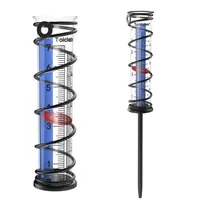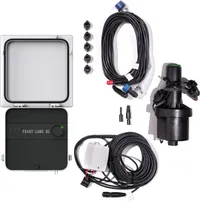How to water a thirsty lawn in a heatwave — lawn experts reveal all, but it’s not what you’d expect
Give your lawn a deep drink but not too often
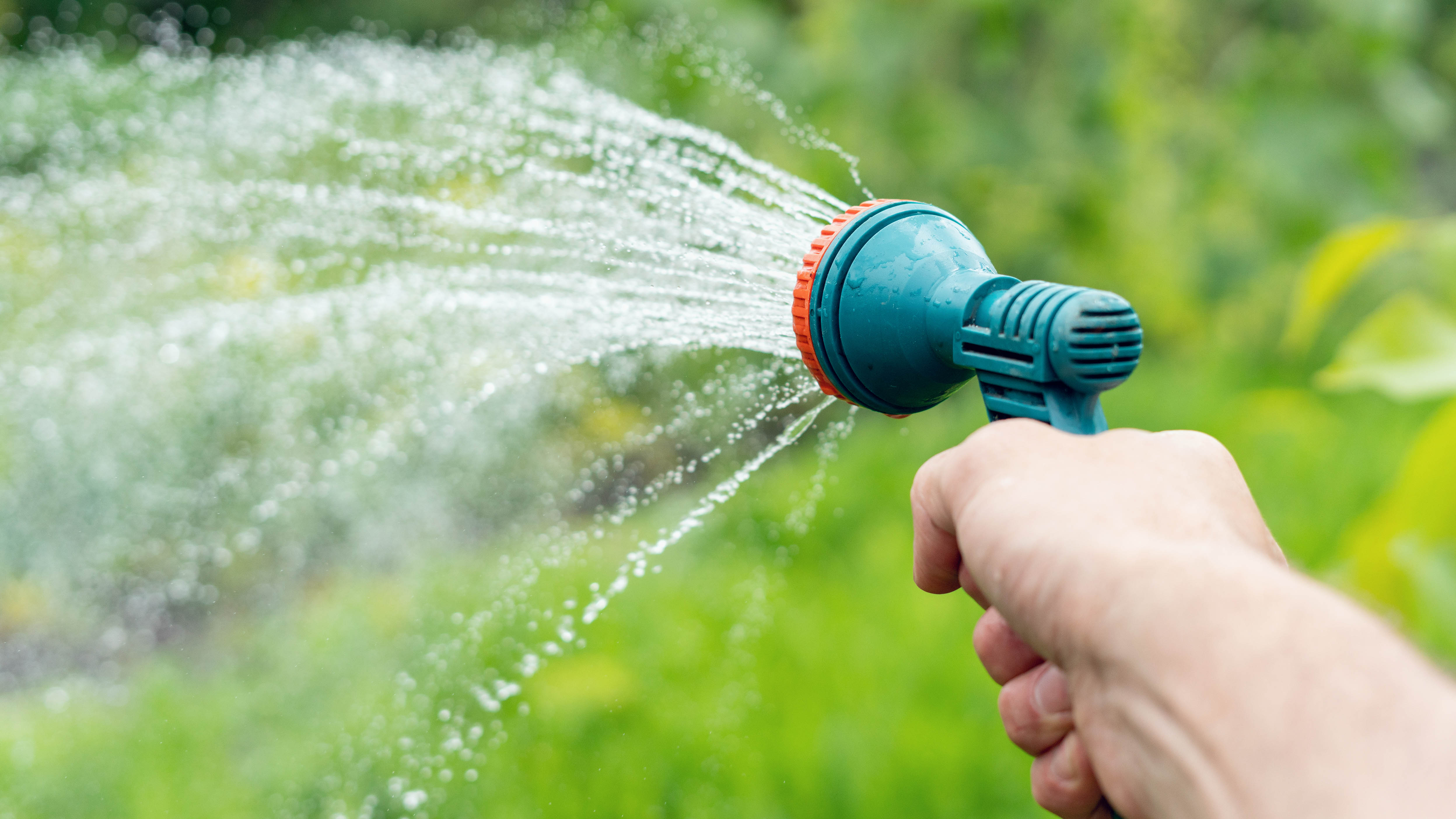
Every gardener knows that keeping a lush lawn requires a heap of work. So, when you do have the chance to sit back and take your hard work in, it’s well deserved. What’s more, in the summer, as we face a warmer climate with less rain, keeping an immaculate lawn is an even greater challenge.
So, while we keep ourselves hydrated, our lawns need the same treatment — but it’s knowing the best way to water our lawns so we don’t cause more harm than good. To discover how to care for a lawn in a heatwave, I called on the expertise of lawn care professionals to share their expert advice.
How does a lawn react in a heatwave?
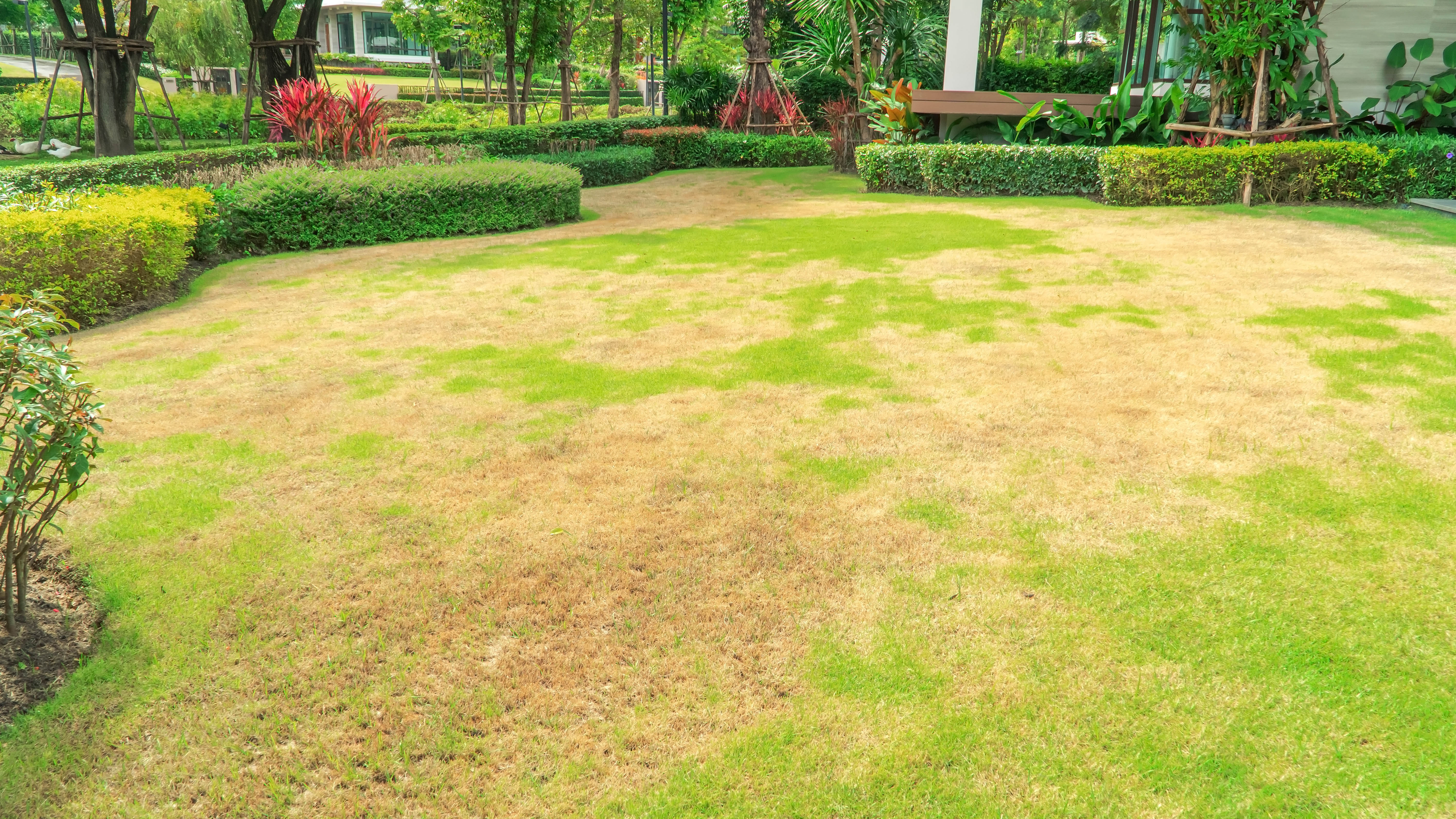
During a heatwave, lawns are stressed by high temperatures, increased evaporation of moisture, and a lack of rainfall. And it’s during this high-stress period that grass can become damaged. Matt Cline, CEO at HillSide Lawn Services, explains that during this time, the roots contract and get closer to the surface. However, he says, “It would take a very, very long drought and high heat period to really cause damage.”
Cline gives some consolation about a heat-stressed lawn, adding that many people assume that when their lawn turns brown, it’s a problem, while, in reality, it’s protecting itself by becoming dormant, which is a normal occurrence.
How often should you water your lawn in a heatwave?
You may be surprised to learn that lawn experts advise against watering your lawn every day in a heatwave, but when you do, it’s important to irrigate your lawn properly to prevent stress.
So, how often should you water your lawn when the heat is on full pelt? Ionel Guuran, landscaping and lawn care expert at Fantastic Gardeners, says that two to three times a week should be sufficient.
However, other experts, including Ryan Walts, training manager and business coach at Lawn Squad, suggest increasing this amount to three to four times a week. But, whichever advice you take, your lawn doesn’t need to be watered every day.
Get instant access to breaking news, the hottest reviews, great deals and helpful tips.
How much water does your lawn need?
“On average, lawns require 1-2 inches of rainfall or irrigation weekly to maintain their healthy green appearance,” says Walts. “Under normal, non-drought weather conditions, watering three mornings per week at 20-30 minutes per area of the lawn is typically enough to help satisfy the lawn’s water requirements.”
However, during heatwaves, Walts says you may need to increase your watering time to between 45-60 minutes. However, the length of time will all depend on how much water your irrigation system expels.
The amount of water you apply to your lawn will also vary depending on your soil type. “Water runs more quickly through light or sandy soil, so frequent, light watering may be better for your lawn if you have this type of soil,” says Allison Koenig, Lawn and Garden Expert at Tractor Supply.
This rain gauge gives you a clear indication of the amount of rainfall in both inches and centimeters, so you can assess how much extra water your lawn and plants require. It comes with a spike for it to be placed directly in the soil, or the gauge can be positioned around a pole or fence post.
Go deep
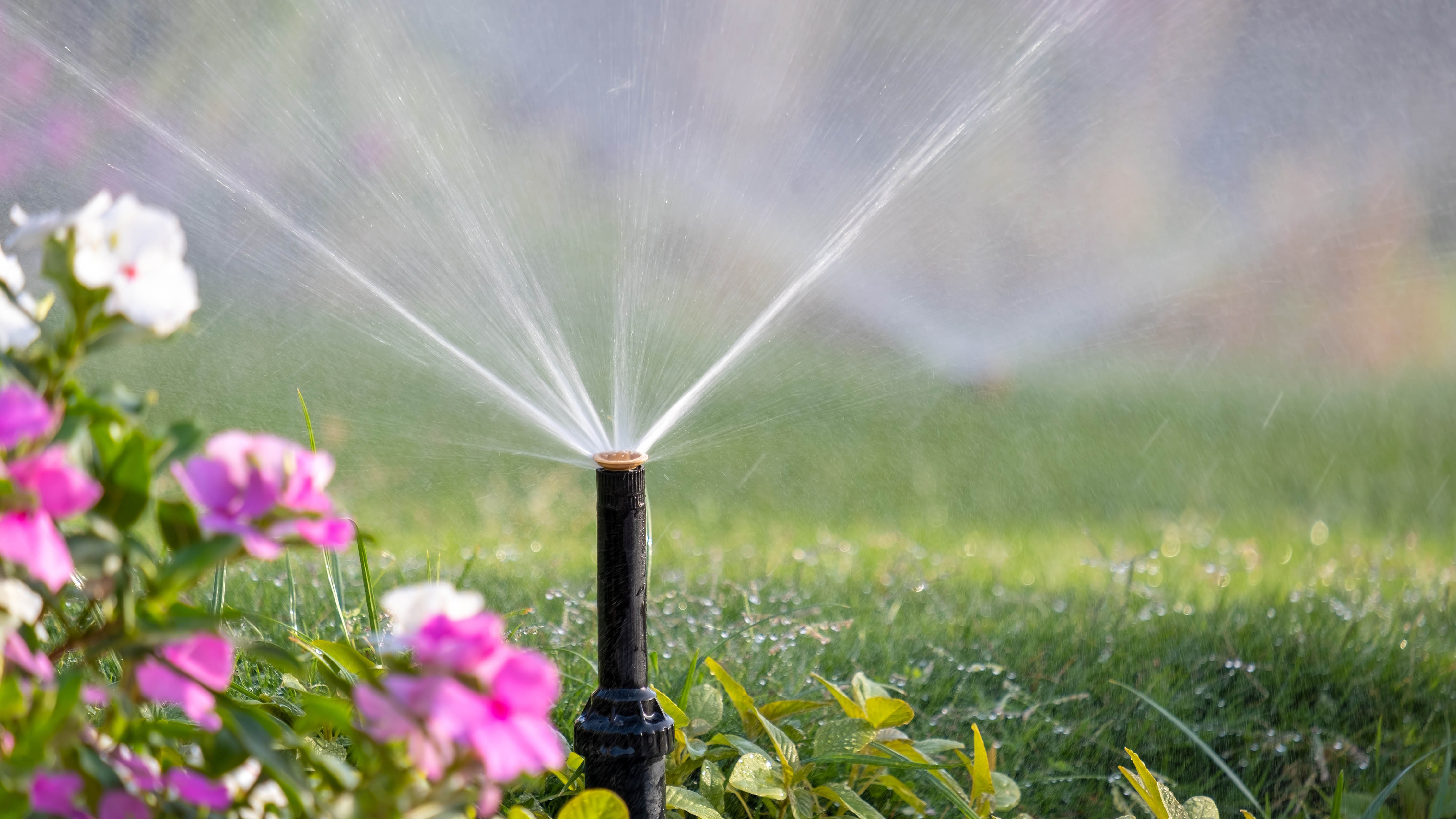
The key to watering your lawn correctly is to give it a long, deep soak, rather than a quick, short soak. “The goal is to apply enough water to penetrate the top 6 to 8 inches [15 to 20 cm] of soil, where the majority of grass roots are located. This encourages deeper root growth, which in turn helps the lawn become more drought-resistant and resilient under extreme heat stress,” Guuran explains.
Why shallowing watering is a mistake
In hot, dry conditions, lawns lose moisture quickly through evaporation and transpiration. However, it can be easy to make the mistake of watering too much. Guuran says, “Frequent shallow watering, which is a common mistake, only wets the surface and encourages shallow roots, making the grass more vulnerable to heat and drought.”
This smart lawn sprinkler kit is a great way to water your lawns without manual labor. You can automate your lawn care routine by setting watering schedules , monitor usage, and receive alerts via the Irrigreen mobile app. It also adjusts watering patterns based on weather forecasts, which is always handy.
Why you need to get the balance just right
Issues can arise if you underwater or overwater your lawn. Troy Hake, owner at Outsidepride, explains, “Underwatering grass leads to many possible issues from yellow or brown discoloration and shallow roots to a dry or crispy feel and appearance. Too much water can cause shallow root systems, which makes the lawn more susceptible to drought and grub damage.”
When is the best time to water your lawn?
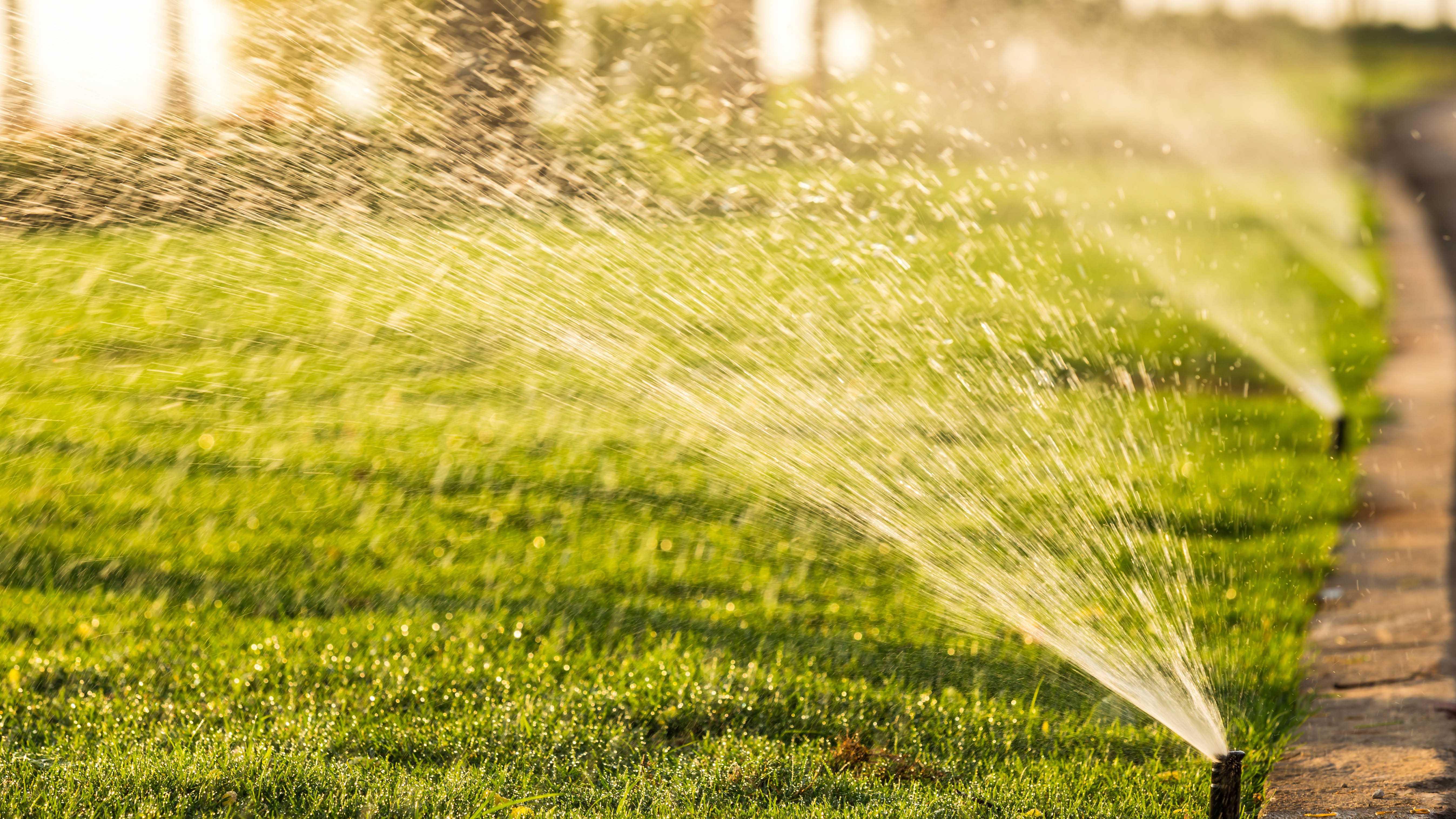
I've always believed that a lawn should be watered at night, but experts say I’ve been doing it wrong. Giuran says, “The ideal time to water is early in the morning, usually between 5 a.m. and 9 a.m. This gives the lawn time to absorb the moisture before the heat of the day, reducing evaporation losses and helping prevent disease.”
Don Chouinard, contract sales manager at Irrigreen, also explains, “Morning is when plants absorb water the most effectively. That’s when their stomata (tiny pores on their leaves) are open, so they’re ready to take in moisture.”
If you water at night, the water will linger on the grass blades for longer, which can lead to fungal problems, such as brown patch or dollar spot, especially when the weather is warm and humid.
While watering your lawn at night is a bad idea, watering it during the middle of the day is even worse. “When the sun is high and the temperatures are at their peak, water evaporates really quickly, so your plants don’t get as much benefit. Plus, water droplets on leaves can act like tiny magnifying glasses and cause leaf burn. This is especially true in summer when the heat is intense,” says Chouinard.
How to take the hard work out of watering your lawn
If you’ve got a large expanse of lawn, apart from having one of the best robot lawnmowers, you’re going to want to invest in a sprinkler or irrigation system to make your life easier.
“Some sprinkler systems and smart controllers can complete a lot of the legwork for you,” says Chouinard, and adds, “Look for systems that leverage AI to pair local weather patterns with the unique attributes of your lawn to automatically set watering schedules.”
More from Tom's Guide
- Experts recommend the 'caveman method' for keeping your house cool in a heatwave — here's how it works
- Sprinkler vs. hose: which is better for your lawn?
- 5 things to consider before buying a water sprinkler system, according to experts

Camilla is the Homes Staff Writer and covers everything to do with homes and gardens. She has a wealth of editorial experience, mounting over 30 years, and covers news and features, tests products for reviews and compiles buying guides.
Her work has appeared in business and consumer titles, including Ideal Home, Real Homes, House Beautiful, Homebuilding & Renovation, and Kitchen & Bathroom Business. She’s even appeared on the cover of Your Home, writing about her own house renovation.
Although she’s obsessed with decorating her home, she also enjoys baking and trying out the latest kitchen appliances. But when she’s not inside, you’ll find her pottering about in her yard, tending to her vegetable patch or taking in her prized hydrangeas.
You must confirm your public display name before commenting
Please logout and then login again, you will then be prompted to enter your display name.
